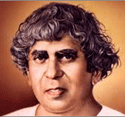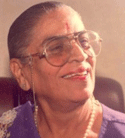Sindh And Sindhis - The Land of Dervishes
by Sadhu T. L. Vaswani

How many know that long before Greece led Europe in culture and political life, there was in Sind an amazing civilisation? “Mohenjodero,” says Sir John Marshall, “represents the oldest of all civilisations.”
How many of the Sindhis know that Sumerians derived their culture from Sind?
How many know that Sind had a share in checking Alexander’s march in India?
How many remember that once Sind carried on commerce with Rome and Greece, with Asia Minor, Babylonia and Egypt?
How many know that Sind sent out her sons to colonise Java?
How many know that the Buddha blessed Sind by his meditations and personal teaching?
How many are aware of the fact that her doctors and men of culture influenced the Khalifa’s Court at Baghdad and the Arabs who carried the torch of culture to medieval Universities in Europe?
How many of the Sindhis have a correct idea of the ruins of Mohenjodaro on the Western bank of the Indus?
How many know that Sind was famous once for shipbuilding? Sind’s work, indeed, was so good that the Sultan of Constantinople preferred to have his vessels built in Sind (and Bengal) rather than in Alexandria.
How many know that Raja Bhartrihari, renouncing his palace, lived in meditation in an asrama on the Sindhu bank?
Has not the Sindhu given her sacred name to India, the land of the Indus? The word “Hindu” is but a disguised form of the word “Sindhu.”
And did not the Vedic rishis chant their sacred hymns on the banks of the Sindhu? Their one mark is a noble simplicity. The Vedic hymns are a “chapter” in the education of the human race. The world’s oldest hymns were chanted in Sind: and some of the most thrilling songs of which Humanity has a record, the lyrics of the Sufi faith, were they not sung on the classic soil of Sind?
The Sindhu civilisation was an independent civilisation, the peer of the civilisations of Egypt and Babylonia. It claims to be the basis of much of Indian culture. Sir John Marshall rightly points out that the Indus (Sindhu) civilisation is bound up with the “cults of Siva and the Mother Goddess.”
At one time Sind stretched as far as Kashmir. The Sindhi rajas (kings) were the Chohans and Sodas who were descended from Prithvi Raj.
Huen Tsang and other Chinese travellers referred to India as “Sindhu” or “Shindu,” the “Land of the Indus.” To Huen Tsang India was a “sacred land.” It was the land of the Buddha and the Dhamma and of the Bodhi Tree. Huen Tsang spoke of India as a ‘land of gold and silver and copper” and he referred to Sind as the “land of villages,”land of agriculture and village industries.
In the eighth century A.D., Baghdad was famous as the centre of a refined culture and civilisation in the East. In the Baghdad Court were Hindu scientists from Sind, deeply versed in Sanskrit and astronomy. The Sanskrit book, named the Brahma Sidhanta, influenced the Arabs.
It is significant that the last Hindu king of Sind was called the “Desh Pita” or the “Father of the People.”
I heard, one day, a Marwari sing a song of the Sindhi poet, Shah Latif. It sang of the yearning of the beautiful maid, Marui, asking the ruling Chief to set her free that she might return to her own people. Full of the passion of freedom was that Marwari singer. He saw me listening to the song with unspoken admiration. He paused for a minute, then said: “Matchless in music is Shah Latif!”
How many in beloved Bharata know of this great Poet, Latif? How many know that he is the king of Sindhi hearts?
A fine tribute was paid to Sind by a Muslim who was not a Sindhi. I met him sometime ago: he learnt that I was a Sindhi. an old man, he exclaimed with emotion: “I have a mind to see Sind.”
“Why?” I asked.
“Sind,” he said, “is the land of God’s dervishes!”
The words ring in my ears: “Sind is the land of God’s dervishes!”
The Peacock-Minded Sindhi Soul
- by Prof. (Ms) Popati Hiranandani

A Sindhi follows the most secular philosophy of humanism. He never restricts himself to dogmas or rituals. The legacy of all embracing love for mankind has made the Sindhi cosmopolitan in his outlook and universal in his temperament. His social structure is not ridden with prejudices of caste, colour and creed.
There is neither the domination of the Brahmins nor the evil of untouchability. Sindhis are known for their realistic and practical outlook. The traditional ills of ancient India, like child marriage, cruelty to widows and casteism are not for them.
A Sindhi adopts an international outlook after being in foreign country only for a year. He will try all kinds of dishes and flavours and yet will remain a Sindhi in his own peculiar way, abusing in his favourite Sindhi words, enjoying typical Sindhi dishes of Khichhri and Sayee Bhaji, Curry Chawar, Dhodho Chatni and Kok Palo whatever and wherever he may be!
A Sindhi is a staunch Indian with a strong streak of patriotism. He helps Subhash Chandra Bose in forming his Azad Hind Fauj or in establishing Jaslok Hospital contributing crores of rupees for the laudable cause. He invites the Indian Cricket Team at a dinner party in Montego Bay, welcomes VIP’s in Hong Kong, helps charitable institutions in India and patronises Indian movies in England.
All through his life, he is culturally and linguistically a Sufi in his outlook, adventurous in his travels, tactful in his trade, social in mixing with people of different faiths and customs, liberal in his views towards social norms, generous in giving and tolerant towards all faiths and beliefs.
A Sindhi is a peacock-minded person.
Sublime Sindhi Soul Embraced Me
- by Rita Shahani

It was the night of 27th June 2001, which went on to the early hours of 28th June. I was in Karachi. The famous novelist and poet Agha Saleem had organized a Mousiqi Mehfil (musical night) in our honour. Hari Motwani was also with me. Being a Station Director of Multan Radio and other places, Agha Saleem is connected with the music world. He had invited prestigious singers and musicians to perform for us at a party followed by dinner. They were singing the Baits and Vais of Shah Abdul Latif with the same authentic Ragas and Raginis i.e. Rag Khambat, Yaman Kalyan, Sur Sarang, Des Rag as directed by Shah Sahib himself in ‘Shah jo Risalo’. They were not only singing Sufi Kalams of Sachal, Sami, Bulle Shah, Rumi, Narain Shyam, Shaikh Ayaz but also Dohas and Sorthas of Saint Kabir, Rahim, Surdas, Tulsidas and Nanak in perfect harmony. It was such a combination of pure Sindhi Sur and Tal, correct Sindhi accent and diction, Alaps and melody with rhythmic forms that I was transcended to different world. I felt that instead of sitting in a posh airconditioned drawing room I was sitting in the sandy deserts of Sindh under the open sky. The moon and the stars were shining above. In the moonlight I could see Sufi poets Shah, Sachal, Sami, Kabir, Bulle Shah singing their own creative verses in great harmony. The entire universe came to a standstill and I was oblivious of time and space. The soul of Sindh had indeed descended upon me and engulfed me in her arms. Yes, this is the real Sindh where I belong.


